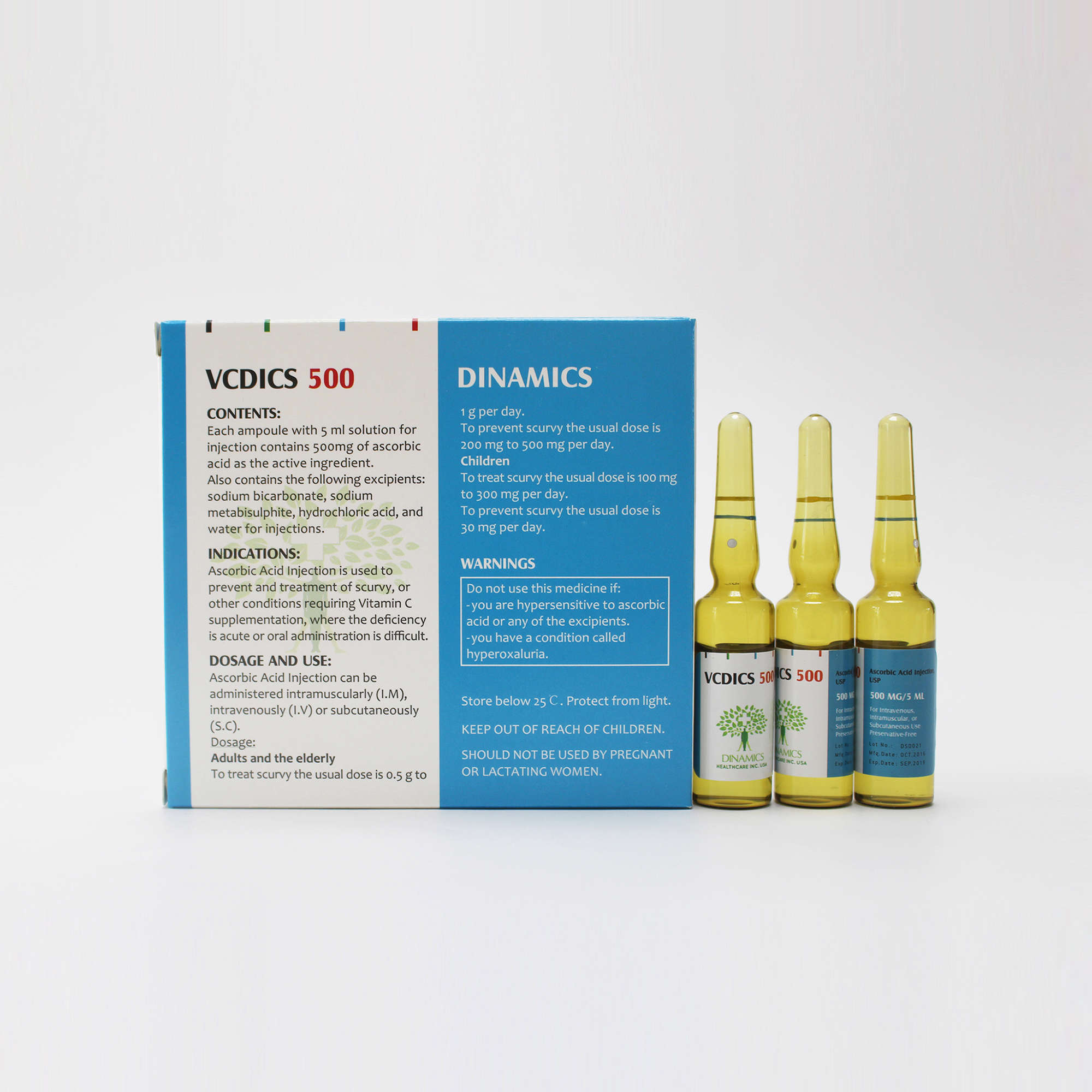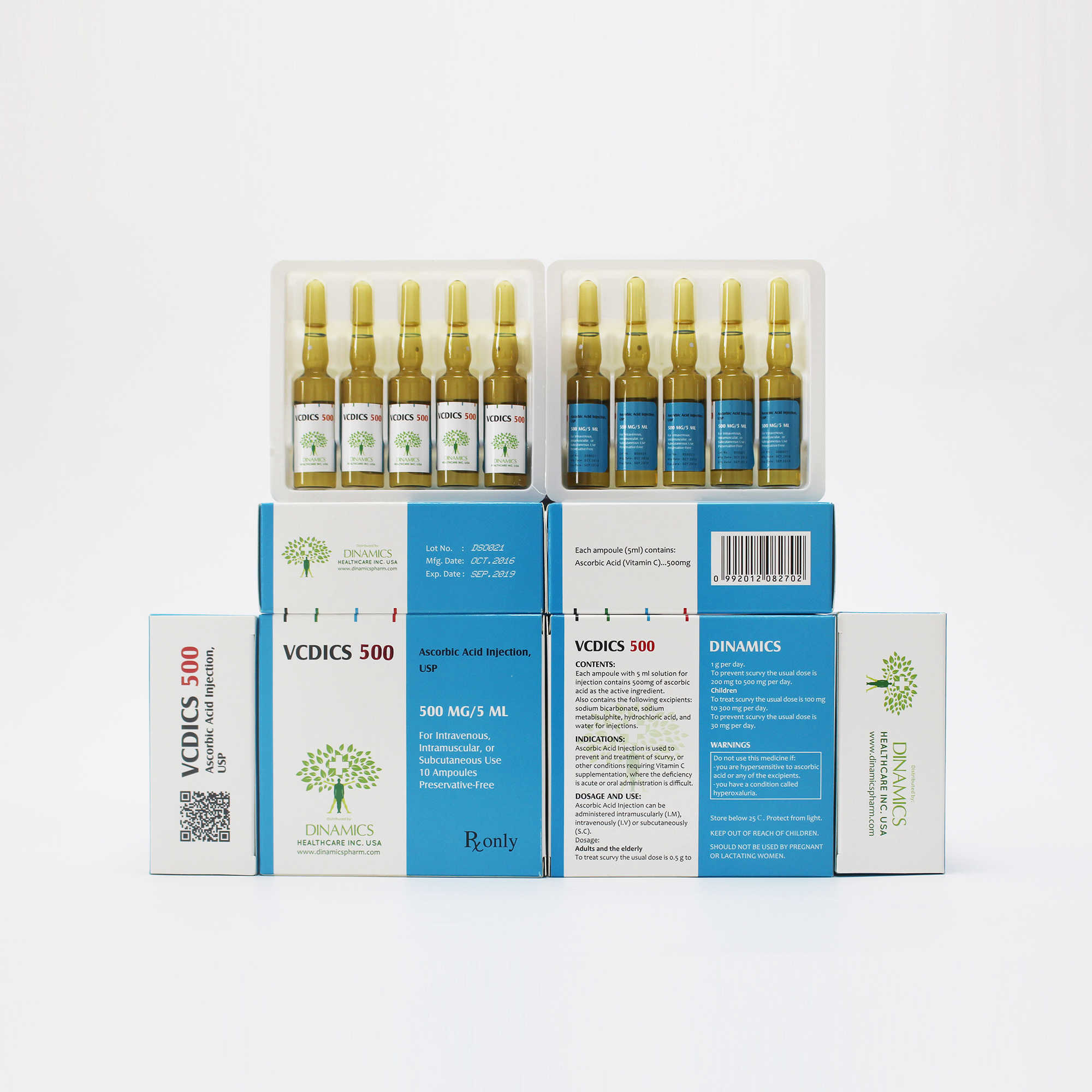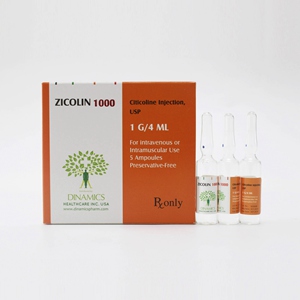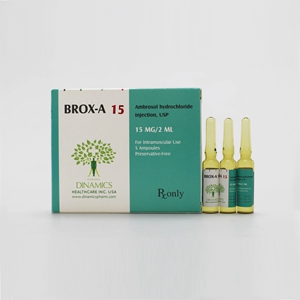Ascorbic Acid Injection, USP
QUICK DETAILS:
Ascorbic Acid Injection Contents:
• The active substance is ascorbic acid, commonly called Vitamin C.
• There are other ingredients of excipients as sodium bicarbonate, sodium metabisulphite, hydrochloric acid, and water for injections.
Ascorbic Acid Injection Character:
Ascorbic Acid Injection is a sterile solution.
Ascorbic Acid Injection Pack:
10 ampoules per tray per box
DESCRIPTION
1. What Ascorbic Acid Injection is and what it is used for
This medicine contains the active ingredient of ascorbic acid, it is a nutritional supplement commonly called Vitamin C. Vitamin C is a water-soluble vitamin, which occurs as a white or slightly yellow crystal or powder with a light acidic taste. This is an antiscorbutic product. It is a clear, colorless to slightly yellow sterile solution of ascorbic acid in water for injections, for intravenous, intramuscular or subcutaneous use.
Ascorbic Acid Injection is used to prevent and treatment of scurvy, or other conditions requiring Vitamin C supplementation, where the deficiency is acute or oral administration is difficult.
2. What you need to know before you take Ascorbic Acid Injection
Do not use Ascorbic Acid Injection if:
- You are hypersensitivity to the active substance or to any of the excipients.
-You have a condition called hyperoxaluria, where you have too much oxalate in your urine. This can lead to kidney stones.
If this applies to you, talk to your doctor or nurse.
Check with your doctor before you are given Ascorbic Acid Injection if:
- You have kidney problems, due to the risk of formation of renal oxalate calculi. Tolerance may be induced in patients taking high doses.
- You smoke
- You have an enzyme deficiency called G6PD deficiency. Large doses of ascorbic acid can cause your blood cells to break up.
Taking other medicines
Tell your doctor if you are taking any of the following medicines:
- Asprin
- Desferrioxamine used to treat iron overload
- Medicines used to treat epilepsy (e.g. phenytoin)
- Appetite suppressants (e.g. fenfluramine)
- Oral contraceptives which contains oestrogen (e.g. “the pill”)
- antibiotics (e.g. tetracycline)
- iron supplement
- oral anticoagulants (e.g. Warfarin)
- fluphenazine for mental disorders
- Any other medicine, including medicines obtained without a prescription. If any of the above applies to you talk to your doctor or nurse.
Having Ascorbic Acid Injection with food and drink
Do not drink alcohol whilst you are having Ascorbic Acid Injection.
Pregnancy and breast-feeding
Tell your doctor if you are pregnant, trying to become pregnant or breastfeeding. Large doses of Vitamin C, i.e. greater than 1g daily, should not be taken during pregnancy since the effect of large doses on the foetus is unknown.
Vitamin C is excreted in breast milk but there is no evidence of any hazard to the baby.
DIRECTION
1.How to take Ascorbic Acid Injection
Ascorbic Acid Injection can be administered intramuscularly (I.M), intravenously (I.V) or subcutaneously (S.C). It will be given to you by a doctor or nurse. Your doctor will choose the dose that is right for you.
Adults and the elderly
To treat scurvy the usual dose is 0.5 g to 1 g per day.
To prevent scurvy the usual dose is 200 mg to 500 mg per day.
Children
To treat scurvy the usual dose is 100 mg to 300 mg per day. To prevent scurvy the usual dose is 30 mg per day.
If you think you have been given more Ascorbic Acid Injection than you should
As this medicine will be given to you by a doctor or nurse, it is unlikely that you will be given too little or too much. However, if you think you have been given too much of this medicine, please tell your doctor.
Large doses of ascorbic acid may cause diarrhoea and kidney stones may form if your urine is acidic. Doses of 600 mg or more may lead to more frequent passing water.
If you have any further questions about the use of this medicine, ask your doctor or nurse.
2.Possible Side Effects:
Like all medicines Ascorbic Acid Injection can cause side effects, although not everybody gets them.
- Diarrhoea
- Increased urination (passing water)
- Hyperoxaluria
- Formation of kidney stones if your urine is acidic.
If any of the side effects gets serious, or if you notice any side effects not listed in this leaflet, please tell your doctor or nurse.
INGREDIENTS
Contents of the pack and other information
What Ascorbic Acid Injection contains
• The active substance is ascorbic acid, commonly called Vitamin C.
• There are other ingredients of excipients as sodium bicarbonate, sodium metabisulphite, hydrochloric acid, and water for injections.
What Ascorbic Acid Injection looks like and contents of the pack
• Ascorbic Acid Injection is a sterile solution. It is supplied in a clear glass ampoule.
• Pack size:10 ampoules per tray per box
STORE
How to store Ascorbic Acid Injection
Keep out of the reach and sight of children.
Do not use this medicine after the expiry date on the carton and ampoule label. The expiry date refers to the last day of that month.
Store below 25°C. Keep the ampoule in the outer carton in order to protect from light.
Do not throw away any medicines via wastewater or household waste. Ask your pharmacist how to throw away medicines you no longer use. These measures will help protect the environment.










